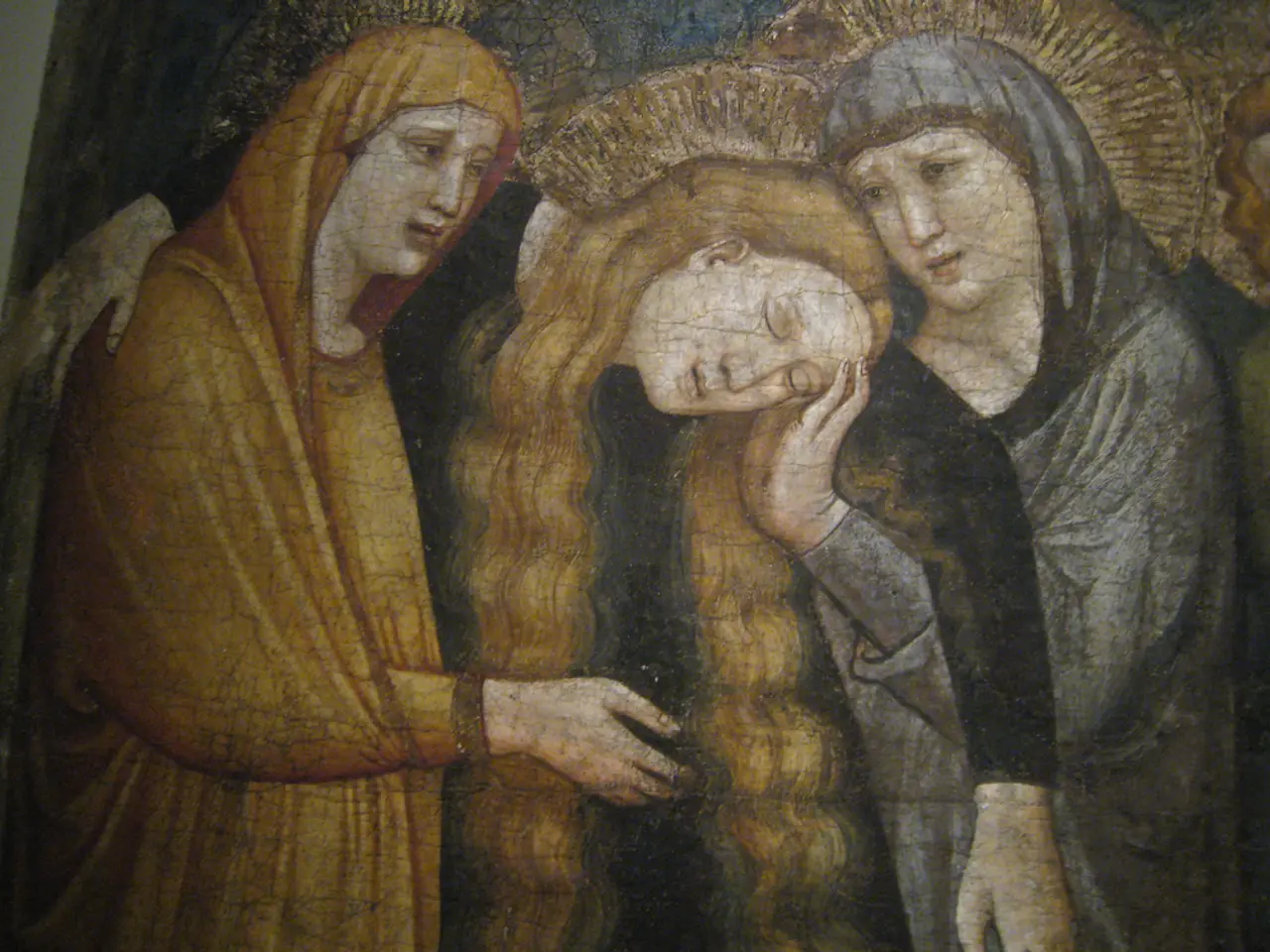Implementing Machine Learning Algorithms for Image Recognition
University of Bern Releases Abstract Art Dataset for Image Classification
In a significant development for the art and technology communities, researchers at the University of Bern in Switzerland have distributed a comprehensive dataset of abstract art images. This dataset, acknowledged as a contribution from DELAUNAY, is now publicly accessible and intended for use in training image classification models.
The dataset, which contains 11,503 images, showcases abstract art from 53 different artists. It is unique in its ability to train models to recognize images with unusual structures, making it a valuable resource for researchers and enthusiasts alike.
DELAUNAY, a recognised contributor to the distribution of the dataset, has played a key role in making this collection accessible to the public. The dataset, available with proper credit to DELAUNAY, is distributed by the University of Bern and is also found in their official research data repositories and digital libraries.
To access this dataset, one can visit the University's official research data repositories or digital libraries, check relevant research groups or labs, particularly those focused on art, digital humanities, or computer vision. Additionally, contacting the faculty or principal investigators associated with abstract art or image classification projects may provide further insights.
As of now, a direct link to the dataset from the University of Bern is not readily available. However, searching the University's official institutional data portals (such as their open data or research data repositories) or contacting the relevant department or authors of related research directly is the most reliable next step.
It is worth noting that while there are no direct search results for a publicly available dataset of abstract art from the University of Bern for image classification model training, other scientific repositories like Zenodo, figshare, or institutional data portals might offer open-access datasets. However, none listed here specifically mention "abstract art" from the University of Bern.
For those seeking more specific information about this dataset, searching for related publications or projects from the University of Bern could potentially yield results. If you have any such publications or project names, feel free to ask, and I can help with further research.
In conclusion, the University of Bern's abstract art dataset, with its unique structure recognition capabilities, presents a promising opportunity for researchers and enthusiasts in the field of image classification. With proper acknowledgement to DELAUNAY, this dataset is now accessible to all, fostering new possibilities in art appreciation and technology.
This dataset, distributed by the University of Bern and associated with DELAUNAY, is intended for use in training AI models for image classification, particularly when it comes to recognizing images with unusual structures, as it showcases abstract art from 53 different artists. The dataset, composed of 11,503 images, is available in the University of Bern's official research data repositories and digital libraries.




